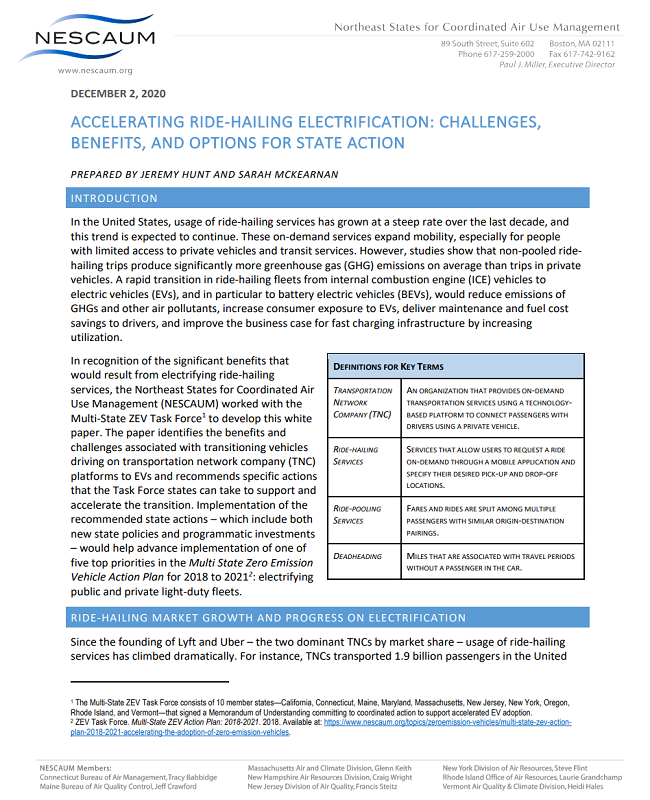In the United States, usage of ride-hailing services has grown at a steep rate over the last decade, and this trend is expected to continue. These on-demand services expand mobility, especially for people with limited access to private vehicles and transit services. However, studies show that non-pooled ride-hailing trips produce significantly more greenhouse gas (GHG) emissions on average than trips in private vehicles. A rapid transition in ride-hailing fleets from internal combustion engine (ICE) vehicles to electric vehicles (EVs), and in particular to battery electric vehicles (BEVs), would reduce emissions of GHGs and other air pollutants, increase consumer exposure to EVs, deliver maintenance and fuel cost savings to drivers, and improve the business case for fast charging infrastructure by increasing utilization.
In recognition of the significant benefits that would result from electrifying ride-hailing services, the Northeast States for Coordinated Air Use Management (NESCAUM) worked with the Multi-State ZEV Task Force1 to develop this white paper. The paper identifies the benefits and challenges associated with transitioning vehicles driving on transportation network company (TNC) platforms to EVs and recommends specific actions that the Task Force states can take to support and accelerate the transition.
More About this Resource
Publisher: NESCAUM
Date: December 2, 2020
Type: Action Plans & Guides
Tags: Ridesharing, Shared Mobility
Countries: United States
States: None
